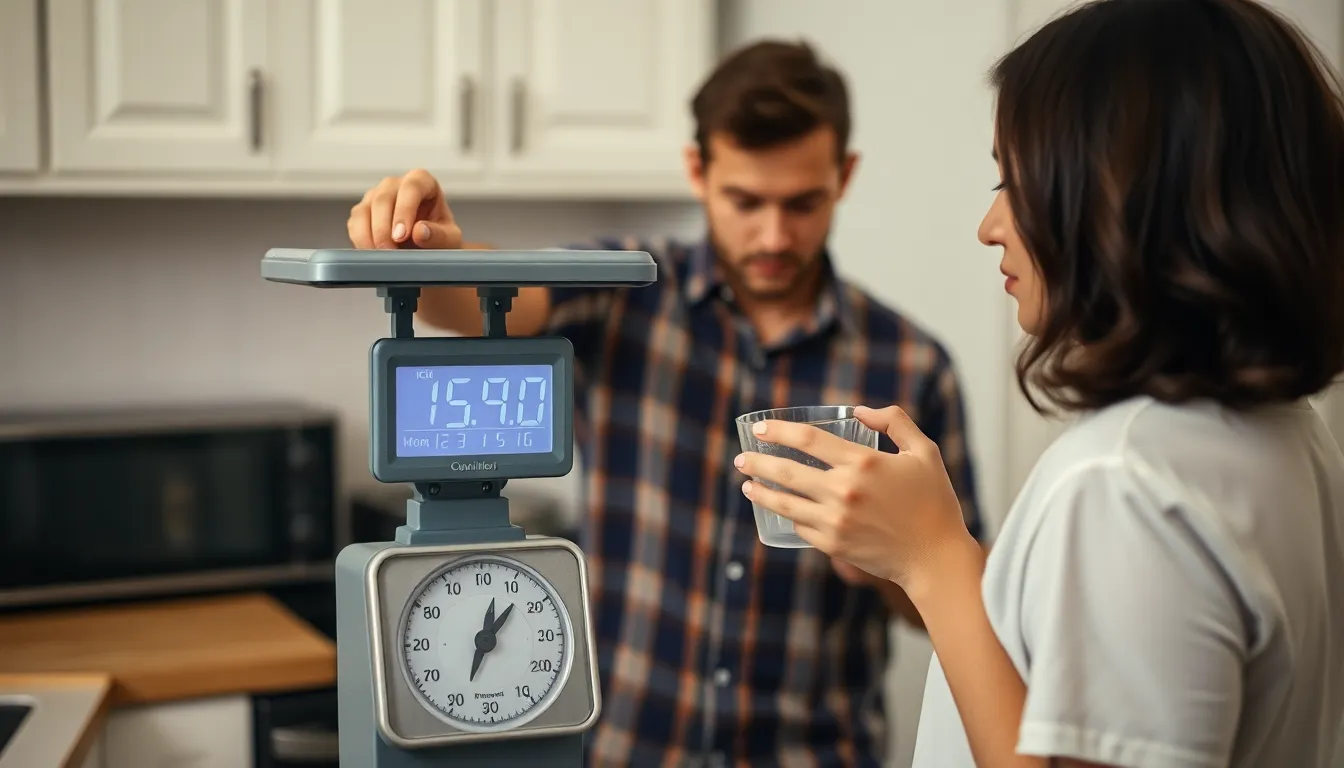Table of Contents
ToggleEver found yourself in a heated debate over whether to lift weights in kilos or pounds? If so, you’re not alone. The world of weight measurement can feel like a confusing game of tug-of-war, especially when you’re trying to impress at the gym or whip up a recipe that requires precision.
Converting kilos to pounds isn’t just a math problem; it’s a passport to fitness freedom and culinary success. With the right conversion formula, you can easily navigate this numerical jungle and avoid the embarrassment of accidentally lifting a feather instead of a barbell. So buckle up as we dive into the simple yet essential art of converting kilos to pounds, ensuring you never miss a beat in your fitness journey or your kitchen adventures.
Understanding Kilos and Pounds
Kilos and pounds represent two different systems of weight measurement. This section clarifies both units, providing essential information for conversions and ensuring better understanding.
What Are Kilos?
Kilos, short for kilograms, are part of the metric system. One kilogram equals 1,000 grams, making it a straightforward measurement for weight. Kilos serve as the standard unit for mass in many countries, especially those using the metric system. Commonly used in various fields, kilos frequently appear in fitness, cooking, and scientific research. Many health and exercise plans report weight in kilograms to maintain consistency. Understanding kilos simplifies many calculations for individuals accustomed to this measurement.
What Are Pounds?
Pounds belong to the imperial system, frequently used in the United States and a few other countries. One pound is equivalent to 16 ounces, serving as a primary unit for measuring weight. In various sectors, including food, travel, and sports, pounds often dominate daily discussions. Individuals might encounter pounds in grocery stores or during physical activities like weightlifting. Familiarity with pounds can assist in comparing metrics in different countries, ensuring better communication about weight. Understanding pounds enables seamless transitions between weight measurements in various contexts.
The Conversion Process

Converting kilos to pounds is a necessary skill for various activities. Understanding the differences in weight measurement allows individuals to communicate effectively in different contexts.
Why Convert Kilos to Pounds?
Converting kilos to pounds helps in many daily situations. Fitness enthusiasts often track weight changes, making it vital to understand both systems. Cooking also benefits from accurate conversions, especially when following recipes that use pounds. Clarity arises when shopping, as many products list weight in pounds, while some scales show kilos. Accurate conversions avoid confusion, ensuring individuals make informed decisions.
The Formula for Conversion
The conversion from kilos to pounds uses a straightforward formula. One kilogram equals approximately 2.20462 pounds. To convert, multiply the number of kilos by this factor. For instance, 5 kilos becomes 11.0231 pounds when multiplied by 2.20462. This method provides a clear pathway for anyone needing to navigate between the two systems. Using this formula streamlines the conversion process, bringing accuracy to various contexts.
Practical Applications
Converting kilos to pounds proves essential in several everyday situations, especially in cooking and fitness.
Cooking and Recipes
Recipes often list ingredients in pounds, making kilo conversions crucial for cooks using metric measurements. A common challenge arises when a recipe calls for specific weights, such as 2 pounds of flour or 500 grams of sugar. By converting kilos to pounds, home chefs ensure they use the correct amounts, avoiding culinary mishaps. For instance, multiplying 1 kilogram by 2.20462 converts it to approximately 2.2 pounds. Understanding this relationship helps in creating successful dishes while adhering to required measurements.
Fitness and Weight Management
In fitness, tracking weight accurately is vital for progress monitoring. Individuals often follow weight goals expressed in pounds, while they might weigh themselves in kilos. A weightlifter aiming for a 220-pound target must convert 100 kilograms to ensure they’re on track. Using the conversion factor of 2.20462 allows them to achieve their fitness milestones efficiently. Moreover, understanding weight changes enhances awareness during training, contributing directly to improved performance and results.
Common Misconceptions
Many people struggle with the differences between kilos and other weight measurements. Understanding these distinctions helps clarify common doubts.
Confusing Kilos with Grams
Kilos often get mixed up with grams, leading to weight inaccuracies. One kilogram equals 1,000 grams, yet many assume grams and kilos are interchangeable. This confusion can result in recipe errors. For example, a 1-kilogram ingredient is 2.20462 pounds, while 1,000 grams converts directly without any additional calculations. When cooks use the wrong unit, they risk under or overestimating key ingredients in dishes. Correct conversions help streamline cooking and enhance the final results.
Overestimating Conversion Accuracy
Some individuals believe that conversion factors always provide precise results. While the approximation of 1 kilogram to 2.20462 pounds is reliable, slight variations exist based on specific contexts. Relying on exact numbers for everyday needs often leads to misunderstandings. Recipes or fitness goals may require more accuracy than an approximation allows. Such miscalculations can cause frustration for those striving for precision in weight management and culinary execution. Recognizing the inherent limitations of conversion formulas ensures individuals approach their calculations with care and awareness.
Mastering the conversion from kilos to pounds is an invaluable skill for anyone navigating the realms of fitness and cooking. By understanding the relationship between these two measurement systems, individuals can enhance their cooking accuracy and track their fitness progress more effectively.
With the simple conversion factor of 2.20462, it becomes easier to bridge the gap between kilos and pounds. This knowledge not only reduces confusion but also empowers individuals to make informed decisions in their daily lives. Embracing this skill ensures that whether in the kitchen or at the gym, they can achieve their goals with confidence and precision.



